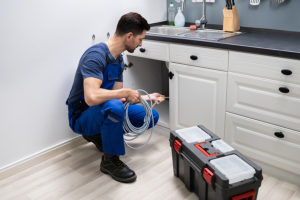 One of a homeowner’s greatest fears is finding that there is a sewage backup in the home. This kind of plumbing emergency can be disastrous and especially so when it involves human waste. However, there is a way to prevent costly sewage backup in the home as long as you know what to watch for.
One of a homeowner’s greatest fears is finding that there is a sewage backup in the home. This kind of plumbing emergency can be disastrous and especially so when it involves human waste. However, there is a way to prevent costly sewage backup in the home as long as you know what to watch for.
Tree Roots
Tree roots can wreak havoc on plumbing, no matter where you live. If the tree is in a position where it isn’t getting the moisture it needs to thrive, then it will start hunting down water from whatever source it can easily access.
A lot of the time, the source they find can be your sewer line. So, the sewage backup you may be experiencing can be the result of far-reaching roots on a quest to find water for the tree near your home.
For this reason, you want to make sure to follow through with regular inspections of your plumbing and property and stay up to date with maintenance.
Stubborn Clogs
One of the more common causes of sewage backups in a home are stubborn clogs. You want to make sure you are not flushing anything down the toilet that doesn’t belong, or you run the risk of these clogs.
Your plumbing and pipes can only handle so much, so when you throw unnecessary items down the toilet, you are causing the pipes more stress. When they can’t handle it, clogs happen.
If you notice the sewage backup in just one area of the home, then you may only have a clog in that particular set of pipes. However, if you are experiencing sewage backup all over the home, then the clog is probably going to be in the main sewer line.
Broken Sewer Lines
Finally, the cause of your home’s sewage backup problem may be due to a broken or collapsed sewer line. This usually depends on the age of the home because the pipes are often constructed from materials that are outdated rather than durable and heavy-duty materials that are designed to last longer.
Broken and collapsed sewer lines are problems you will typically find in older homes that had been outfitted with clay or cast iron piping rather than durable plastic materials.
To best avoid these problems, you need to stay up to date with inspections and maintenance; otherwise, you may have to deal with a costly set of repairs that you might not have anticipated.
